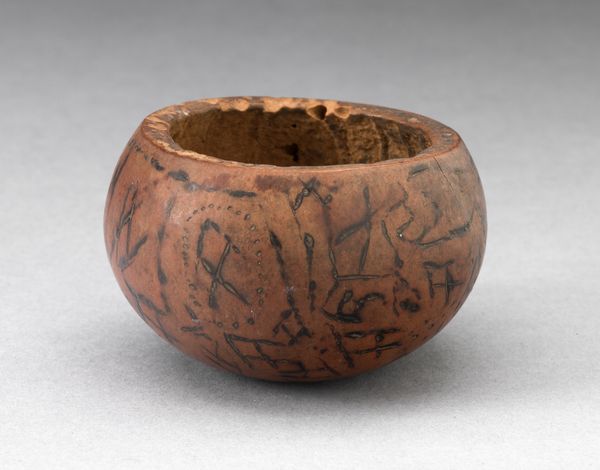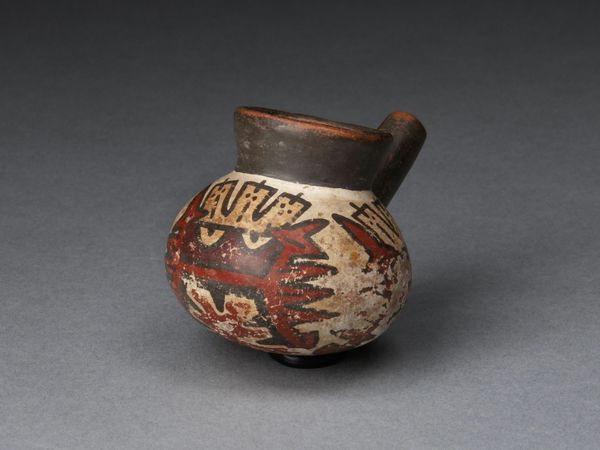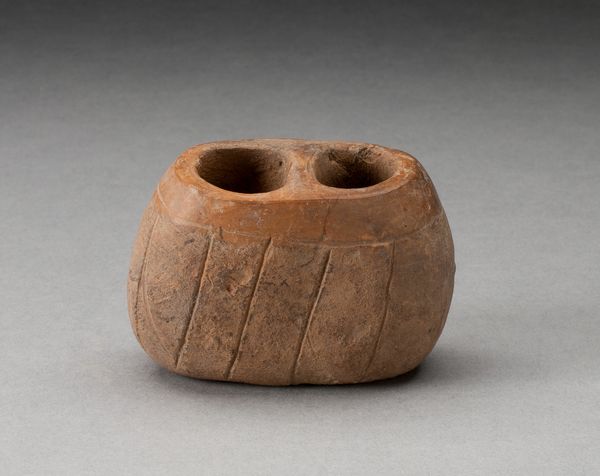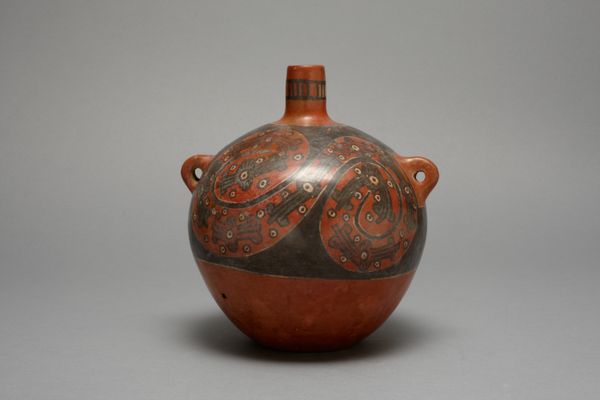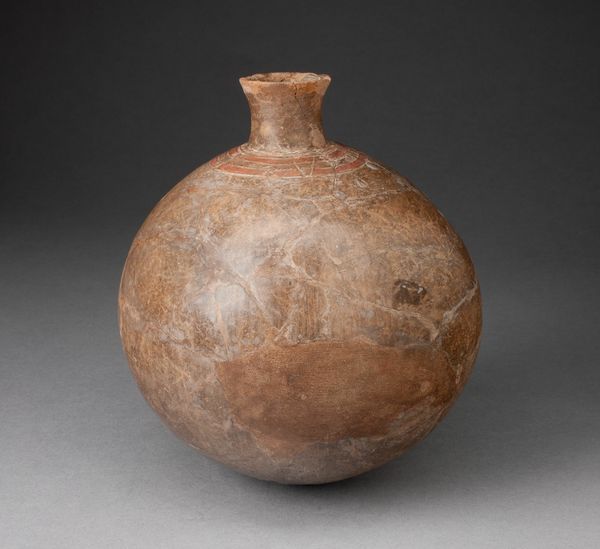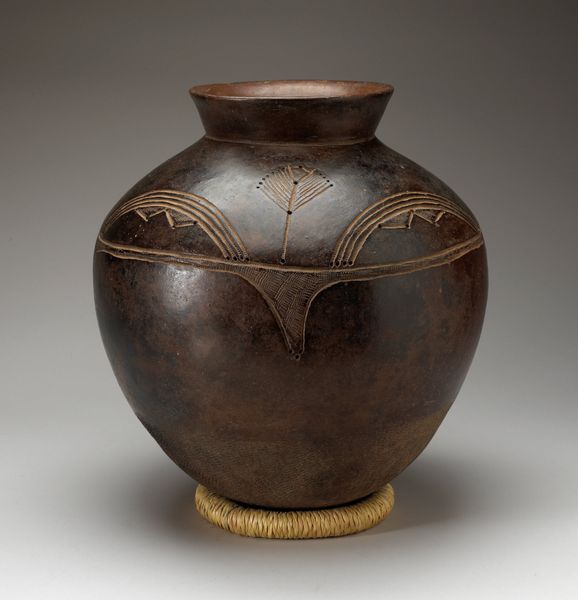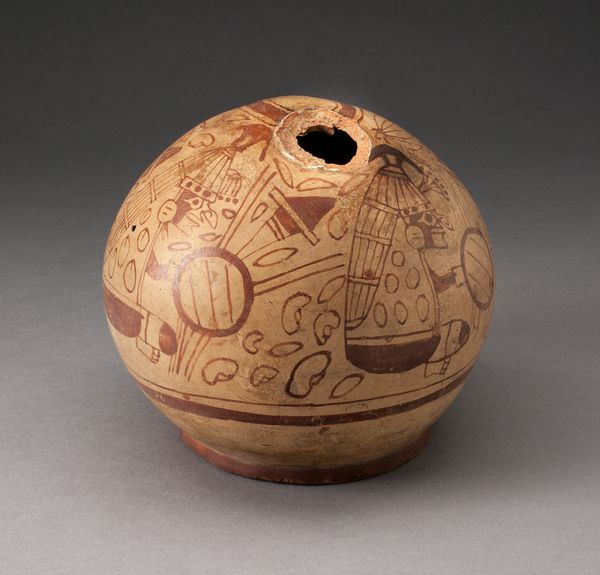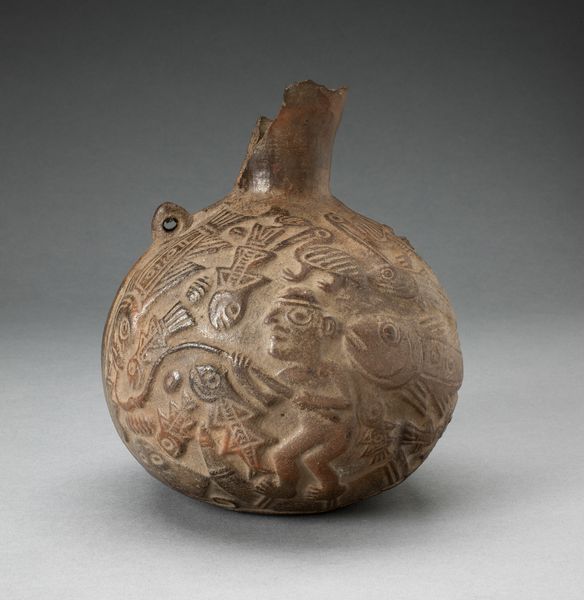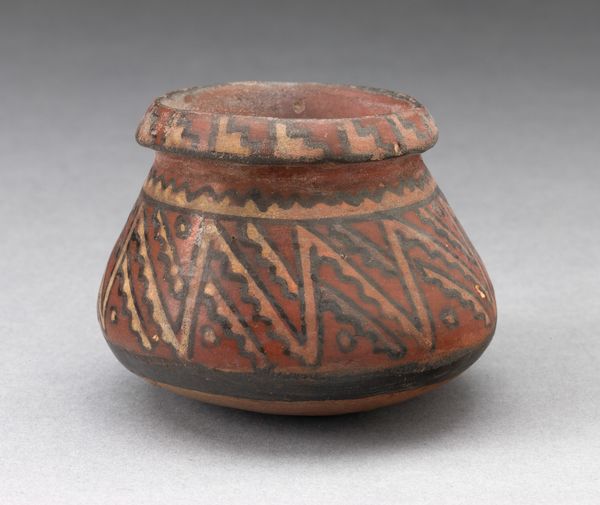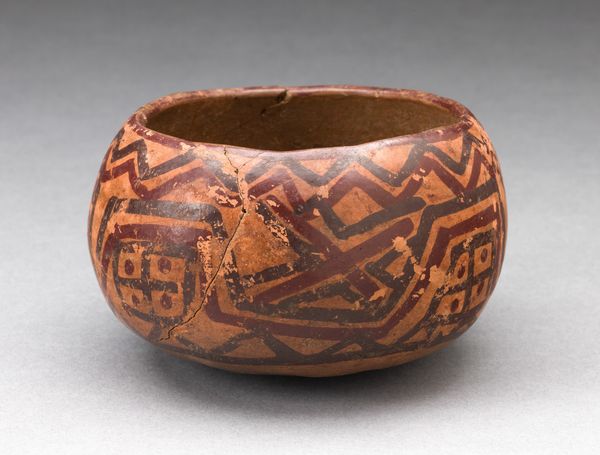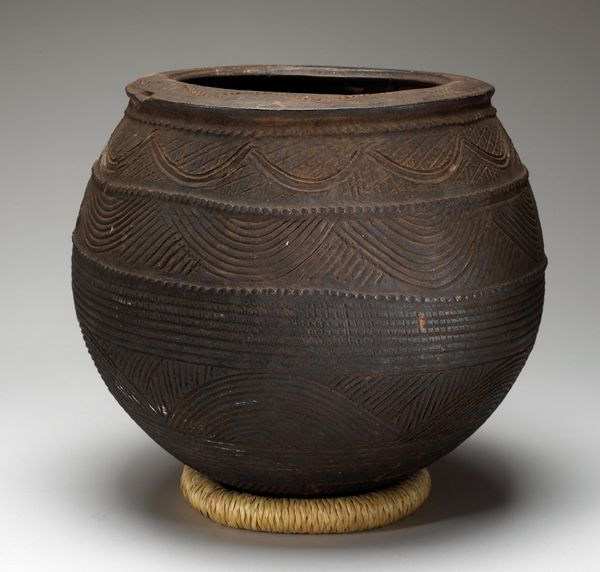
Bowl Carved with Costumed Ritual Figure With Feline and Serpent Attributes c. 180 - 500
0:00
0:00
ceramic, terracotta
#
ceramic
#
figuration
#
ceramic
#
terracotta
#
indigenous-americas
Dimensions: 7.6 × 9.8 cm (3 × 3 7/8 in.)
Copyright: Public Domain
Editor: Here we have a ceramic bowl created by the Nazca people, sometime between 180 and 500 AD. What really strikes me is the detail in such a small vessel. The stylized figure on it feels both ancient and surprisingly modern. What do you see in this piece? Curator: Oh, it sings to me of ancient rites! Look at the figure—part human, part feline, entwined with a serpent. This isn't just decoration, but a portal. I see a shaman, perhaps, mid-transformation. Those animal attributes speak of power drawn from the natural world, a dialogue with the spirits. Don’t you think the artist is channeling something? Editor: I do, absolutely! The blending of animalistic features does give off that otherworldly, transformative vibe. What's particularly intriguing is the serpent aspect; how common was this iconography for the Nazca people? Curator: Serpents were vital. Think of shedding skin—rebirth, renewal! Nazca artists wove these symbols into textiles, ceramics… even geoglyphs that can only be truly seen from the sky! The bowl itself is humble, utilitarian. Yet, elevated by this art, it becomes a sacred object. A container not just for substance, but for stories, for belief. Don't you feel the resonance between the material and the message? Editor: Definitely! The bowl's simple shape amplifies the intricate carving. It’s amazing how a single piece can offer such a rich glimpse into a whole belief system. I would have thought the shape was more important, it is wonderful that I learned the figure it just as crucial. Curator: And isn't that the magic of art? It whispers secrets if you're willing to listen, allowing ancient hands to reach out and touch us across millennia.
Comments
No comments
Be the first to comment and join the conversation on the ultimate creative platform.
